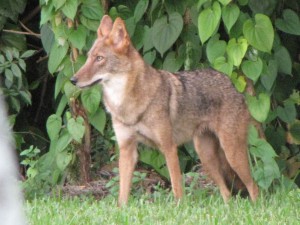What exactly are wildlife corridors? Wildlife corridors are sections of land connecting two or more larger areas of wildlife habitat together. You can think of it like a dumbbell where the ends of the dumbbell are the large, usually natural and native areas of wildlife habitat and the handle of the dumbbell is the connection or corridor between the two sections of land. Corridors are very important in the health and maintenance of wildlife as they allow for movement of animals between these natural areas. As people have moved into the state of Florida, developments have cut off historically connected sections of land, causing what is known as habitat fragmentation. As the natural wildlife habitat is divided and broken up by development, plants and animals become isolated in the remaining natural areas. These “islands” of land lead to reduced biodiversity of plants and animals and limit the overall function of the historical ecosystem that once existed there.
Natural Resource professionals working on wildlife corridors must also take land ownership into consideration. In Florida, there are large amounts of private land in addition to the public land established throughout the years. Certain organizations work specifically with private land owners to examine how their land can serve as wildlife corridors now and into the future. One way this can be done is with a conservation easement. A conservation easement is a legal agreement between a landowner and a land trust or government agency that permanently limits uses of the land to protect its conservation values1. As part of the agreement, landowners give up some of their rights such as building development and all future landowners of the property are bound by the same terms. Conservation easements are not easy to tackle, but they serve to assist in creating and establishing wildlife corridors throughout the state of Florida.
Wildlife corridors exist and are managed at different scales (ex. regionally, locally). Generally speaking, the wider the corridor, the better and the larger impact they can have on plants and animals living within these areas. You may have heard about the Florida Wildlife Corridor expedition which is dedicated to bringing awareness to all of us about the importance of land corridors and helping to identify gaps in the landscape where corridors are needed.
Plant and animal interactions support the many ecosystems that make up Florida. As one plant or animals is impacted, there are effects elsewhere in the system. It is important for all of us to see and realize that we are also a part of this system and equally as dependent on the functioning ecosystems as the flora and fauna living in them. In Pinellas County, we can focus on the local-scale wildlife corridors at the neighborhood level to connect with existing parks and preserves throughout the county. You can find more tips on creating backyard wildlife habitat here: http://bit.ly/WildlifeWanted

1 – http://www.landtrustalliance.org/conservation/landowners/conservation-easements
An Equal Opportunity Institution.
 0
0
